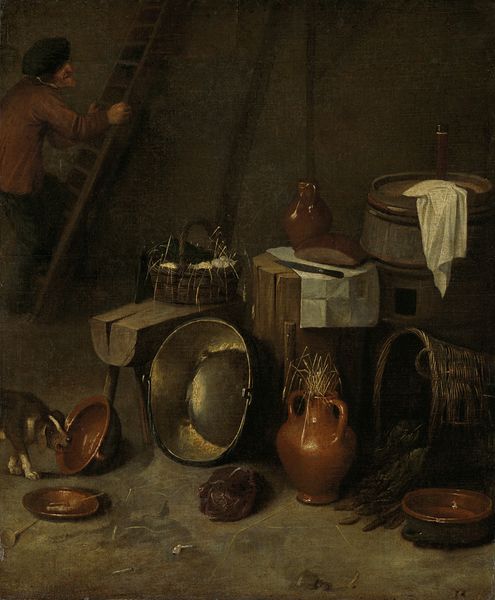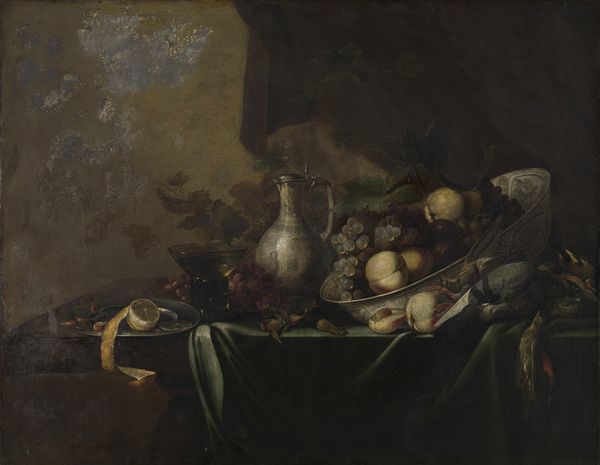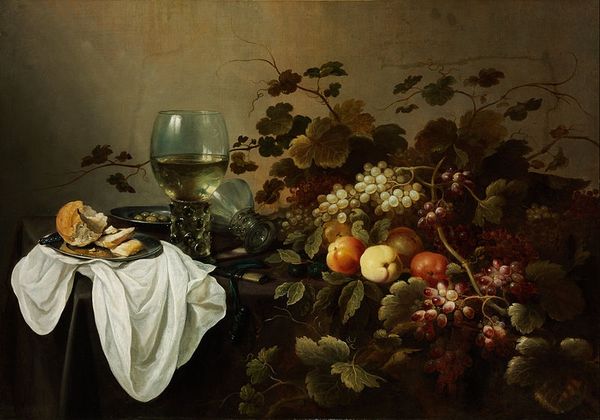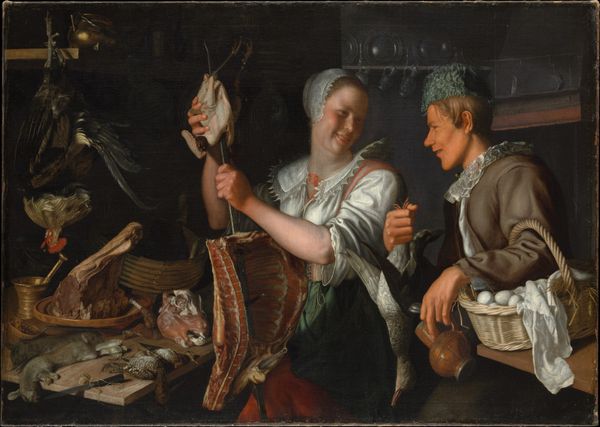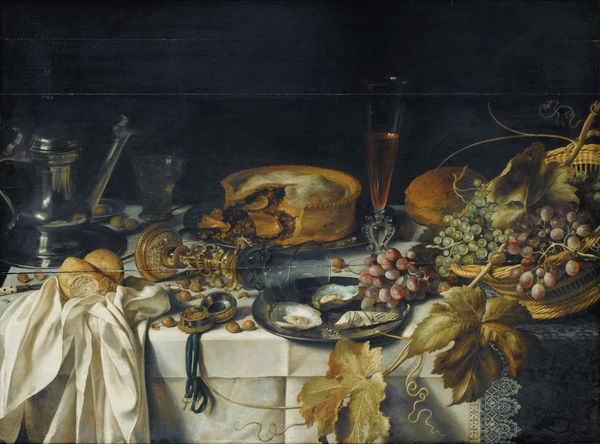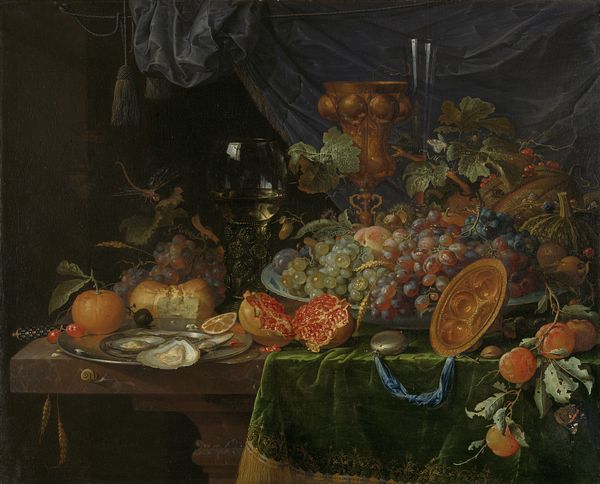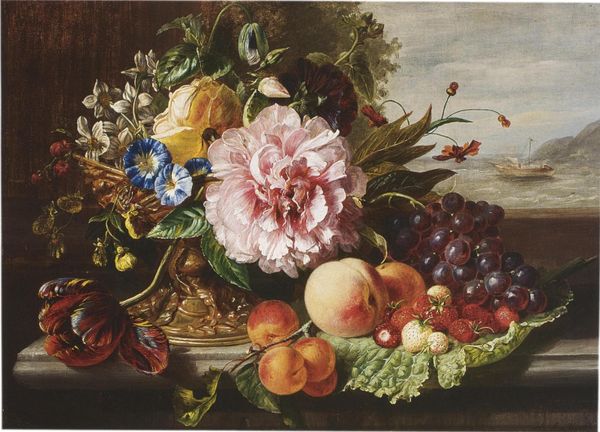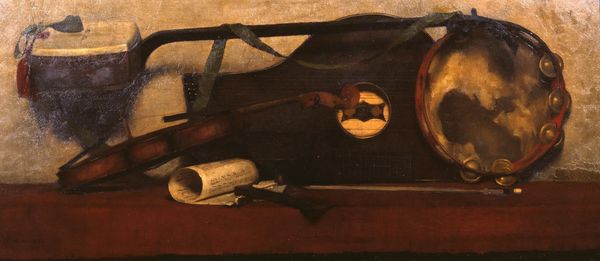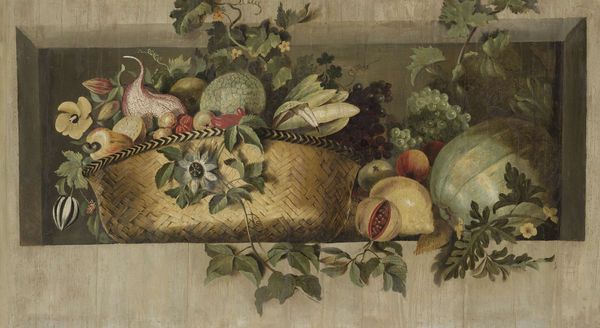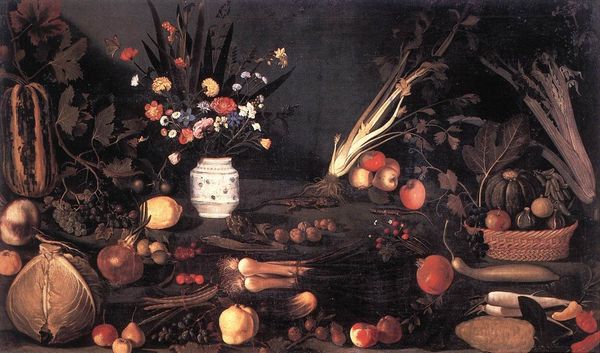
painting, oil-paint, photography
#
still-life
#
gouache
#
baroque
#
painting
#
oil-paint
#
photography
#
oil painting
Copyright: Public domain
Curator: It feels immediately somber, almost like a meditation on containment and secrecy. There’s such stark contrast against that dark background. Editor: Indeed. We are looking at "Natureza Morta (caixa com potes)"—Still Life (box with pots)—painted in 1660 by Josefa de Óbidos. This Baroque painting really captures a moment in time, doesn't it? Consider the period and what the work signifies in terms of societal values of Óbidos' patrons at that time. Curator: The arrangement is certainly deliberate. I am intrigued by the vertical emphasis achieved through stacking those round boxes. Then you’ve got this hanging object, resembling toys or ornaments, suspended in an ethereal way above the lower, weighted pots. The oil paint gives an almost tangible texture. Editor: What strikes me most is Óbidos' ability to make these everyday items symbols of something more profound. Still lifes, traditionally, were markers of wealth. Were these objects specific to her patrons, indicators of status, domestic virtue? The austere composition steers away from opulent excess seen in contemporary paintings. Curator: Interesting. What is striking from a formalist standpoint is how Josefa uses chiaroscuro to model these simple shapes into striking forms. Look at how the shadow defines the edges of each pot and the delicate application to give volume to that tied white cloth covering one of the jars. Editor: True. Josefa de Óbidos, breaking into a male dominated art world and capturing such a detailed expression… this choice in subject, that controlled manipulation of light… I wonder what kind of power she exercised to get to this specific style that wasn't purely derivative from her male counterparts. Curator: It’s really the stark simplicity of the painting that continues to pull me in. What an interesting contribution to our understanding of that era, viewed from the eyes and the talent of a remarkable woman. Editor: Absolutely, and the conversation doesn't stop here. Thank you for your insight!
Comments
No comments
Be the first to comment and join the conversation on the ultimate creative platform.
